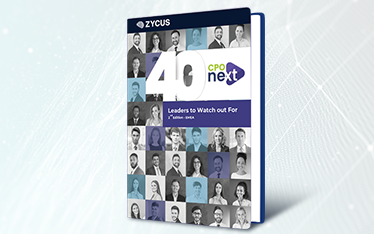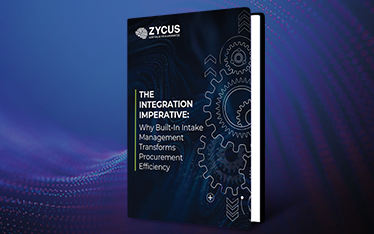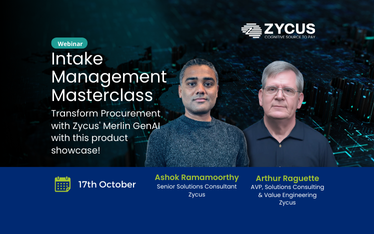The S2P cycle involves intricately connecting sourcing, contracting, ordering, receiving, invoicing, and payment activities into an end-to-end process.
Done right, it unlocks substantial gains in efficiency, savings, and compliance. However, despite its strategic importance in purchase to pay process, there are challenges of implementing. Source to Pay process like multiple approval hierarchies, centralized purchasing, integrating technology and managing complex supplier onboarding.
Excellence relies on purpose-built source to pay software solution, laser-focused on tailoring and streamlining procure to pay. Specialized functionality and centralized data lift both user experiences and enterprise-wide efficiency.
This blog demystifies the essence of S2P process- how end-to-end integration of its interconnected workflows drives productivity and savings, thus driving efficiency and value in procurement operations.
Delta Air Lines Enhances Project Management & Gains Real Time Insights Across procure to pay Functions Using Zycus’ GenAI based Source-to-Pay Platform
Step-by-Step Breakdown of the Source-to-Pay Process
Streamlined source to pay process are key in modern procurement, offering a comprehensive framework that spans from initial Strategic Sourcing to the final payment stage. Each step is executed with accuracy, leveraging technology and strategic planning.
Through a detailed breakdown, we will provide a comprehensive understanding of the source to pay process, using the example of procuring packaging material for an FMCG company.
Strategic Sourcing: Identifying and Selecting Suppliers
The first step in S2P involves identifying qualified suppliers via thorough market research. Typically, this entails issuing Requests for Information (RFIs), Requests for Proposals (RFPs), and Requests for Quotes (RFQs) to potential suppliers. E-auction capabilities can facilitate competitive bidding to secure optimal pricing and terms from reputable suppliers.
- Example- The FMCG company’s procurement team needs eco-friendly packaging materials. They conduct market research, sending out RFIs and RFPs to suppliers specializing in sustainable packaging.
Contracting: Negotiating and Finalizing Terms
After identifying suppliers, the next phase is contracting and negotiation. This stage involves choosing a limited number of vendors based on the information gathered and negotiating terms, focusing on minimizing costs and ensuring quality. Key aspects like purchase price and quantities are negotiated, and contracts are formalized. The use of digital platforms for contracting can streamline this process, maintaining documentation in a unified interface.
- Example- The FMCG company shortlists three suppliers for eco-friendly packaging. They enter negotiations, focusing on price, quality, and delivery terms, and finalize contracts with the best-suited supplier.
Purchasing: Creating and Managing Purchase Order
This stage transitions from strategic supplier relationships to transactional activities, involving the creation and management of Purchase Order (POs). This step contains purchase requisitions and ordering processes, where procurement teams issue purchase order based on contract lifecycle management. Technology plays a significant role here, providing flexibility in creating and sending POs to suppliers. In the case of foreseen repeat purchases, the procurement teams may even make available, a catalog of items for each vendor, which allows for easier purchasing.
- Example- The FMCG company issues a PO for the required quantity of eco-friendly packaging material, detailing the agreed-upon price and delivery schedule, managed through their source to pay software.
Receiving: Handling Goods and Services Receipt
Upon purchasing, the next step is the receiving of goods and services. This phase involves inspecting and accepting the delivered items or services. It’s essential to ensure that what was agreed upon in the contract and ordered in the POs is precisely what is received. Efficient systems for receiving and inventory management are key here.
- Example- On receiving the packaging materials, the FMCG company’s receiving department inspects the quality and quantity against the PO, updating the inventory system.
Invoicing: Managing Supplier Invoices
The supplier invoice management is crucial for financial accuracy. This process includes receiving invoices, validating them against the purchase orders and the
receipt of the goods, and ensuring that the invoicing complies with the agreed terms. Automation plays a key role in streamlining the procure to pay process, ensuring efficiency and reducing manual errors.
- Example- The FMCG company receives an invoice from the packaging material supplier. The accounts payable department verifies the invoice for correctness against the PO and the receipt of the goods, ensuring all details align.
Payment: Completing the Transaction
The final step in the source to pay process flow involves making payments to suppliers as per the contractual terms. Efficient procure to pay process is important for maintaining supplier relationship management and financial health. Automated payment systems can ensure timely payments, manage working capital efficiently, and possibly leverage discounts for early payments.
- Example- After validating the invoice, the FMCG company processes the payment as per the agreed terms with the supplier performance and supplier management effectively completing the source-to-pay process and securing the necessary eco-friendly packaging materials.
Explore Our Whitepaper: 10 Key Take Always: Transforming the Source-to-Pay Process
How to Choose a source to pay process Tool?
Businesses need to follow some of the key steps to effectively choose the right source to pay process tool. These steps are pointed out in the following:
- Assess Current process Pain Points and Requirements- Begin by conducting an in-depth assessment of your organization’s procurement process needs, objectives, and existing pain points. Understanding these aspects is crucial to customize the S2P system to your unique requirements, ensuring it addresses specific challenges and aligns with your operational goals.
- Consider Ease of Use and User Adoption- Opt for a system with an intuitive User Interface (UI). A user-centric approach, as emphasized by McKinsey’s Digital Procurement Transformation Imperative, is key to successful digital transformation. The S2P tool should be easy to use, requiring minimal training, thereby reducing technical complexity for end users and encouraging widespread adoption.
- Ensure Support for Necessary Integrations- Evaluate how the S2P tool integrates with your existing infrastructure. It’s essential to choose a system that can seamlessly interface with other applications in use, thus avoiding data silos and ensuring a unified workflow across different departments and processes.
- Verify Security, Compliance, and Access Controls- Security and compliance are non-negotiable aspects of any S2P tool. Ensure the system adheres to industry-standard security protocols and offers robust access controls to protect sensitive data and maintain compliance with relevant regulations.
- Compare Total Cost of Ownership Against ROI- Consider the Total Cost of ownership (TCO) rather than just the initial investment. This includes implementation, maintenance, and potential savings over time. Build a strong business case focusing on the ROI justification to assess the long-term financial impact of the S2P tool.
Best Practices for source to pay process flow Optimization
Optimizing the source to pay process is essential for businesses seeking efficiency and cost savings. Here we are highlighting the best practices for enhancing each stage of the process:
- Strategic Sourcing and Supplier Selection- Begin with comprehensive market research to identify potential suppliers. Use advanced methods within the source to pay cycle such as e-auctions to ensure competitive bidding, focusing on cost-effectiveness and reliability. Implement tools for easy gathering and spend analysis data.
- Optimized Goods Receipt and Quality Control- Develop robust systems for receiving goods and services, including quality checks and verification against purchase orders. This ensures that only products meeting the agreed standards are accepted, maintaining the integrity of the supply chain.
- Integrated Analytics for Better Decision-Making- Utilize integrated analytics to gain insights into spending data, supplier performance, supplier management, and contract compliance. This helps in making informed decisions that can lead to cost savings and procurement processes improvements.
- Technology Integration and AI Utilization- Adopt AI and machine learning solutions to automate text-heavy tasks, provide smart spend analysis, and adapt to future capabilities. Systems like Zycus’s Merlin AI Suite can enhance entire procurement process and accounts payable processes.
- Continuous Improvement- Regularly review and update the source to pay process flow to incorporate new technologies, market trends, and organizational changes. This ensures the procurement processes remains efficient and aligned with the business objectives.
Leveraging Technology in Source-to-Pay: Maximize Value With Zycus
Leveraging Technology in one’s source to pay cycle significantly enhances procurement process, combining strategic accuracy with operational efficiency. Zycus’ Source-to-Pay Suite, powered by Automation and AI, revolutionizes procurement workflows. This integration boosts efficiency, ensures compliance, and minimizes manual tasks. It facilitates smooth procurement process management, enabling strategic decision-making, strengthening supplier relationships and supplier management.
For a transformative procurement activities, don’t wait – discover the future of procurement with Zycus‘ Source-to-Pay Suite. Schedule your exclusive demo today, and witness the power of automation and integration.
Real-World Success Story: Delta Air Lines
Delta Air Lines significantly enhanced its project management and gained real-time insights across procurement functions by using Zycus’ Source-to-Pay Platform.
Related Reads:
- 5 Key Benefits of Source-to-Pay Automation
- Source to Pay: An Actionable Roadmap
- Demystifying Source-to-Pay: A Manual for the Modern Procurement Era
- Your Guide to Source-to-Pay
- Whitepaper- 8 Reasons to go for Integrated Source-to-Pay Suite
- Webinar- Integrated & Intelligent Source-to-Pay | TechWatch OnDemand Webinar
- Webinar- Live Product Showcase: Experience AI-driven Source-to-Pay in Action
- Whitepaper- Essential Source-to-Pay KPIs, Implementation Mindfulness & Benchmarking
- Press release – Zycus Signs GSMA As Customer For Source-to-pay Suite










